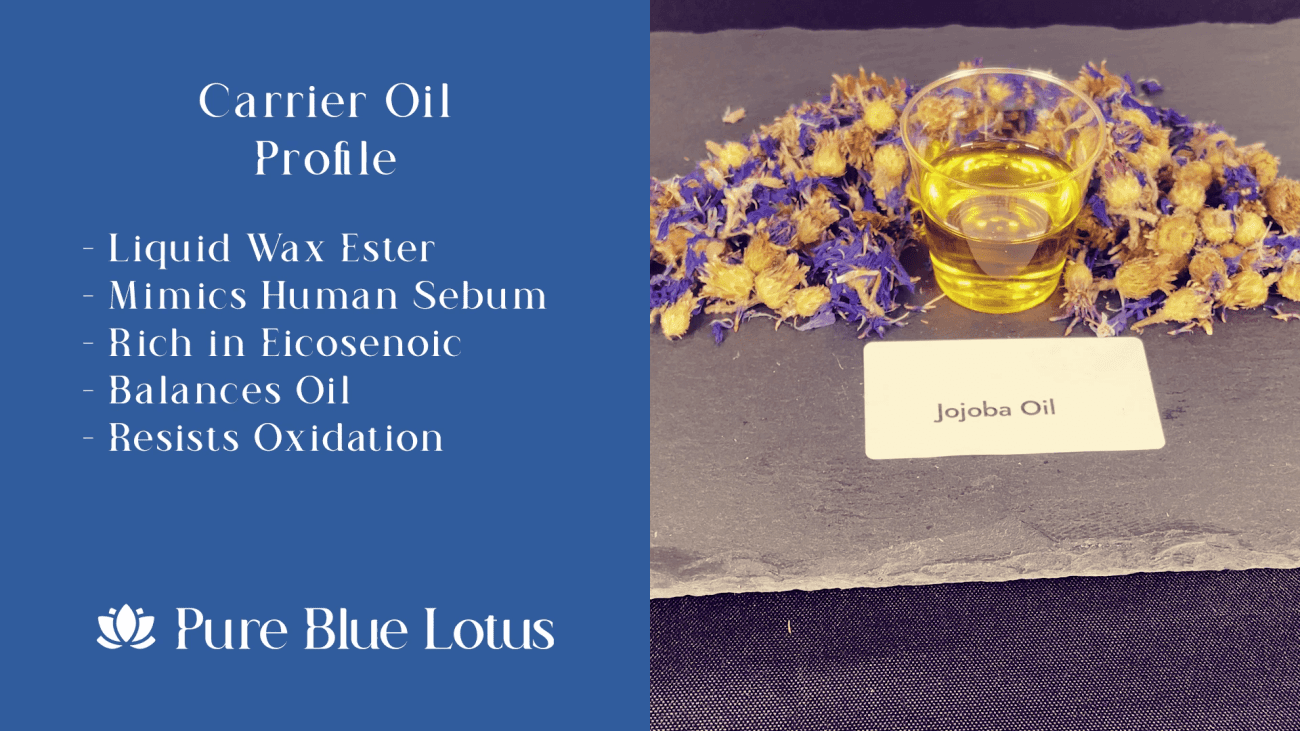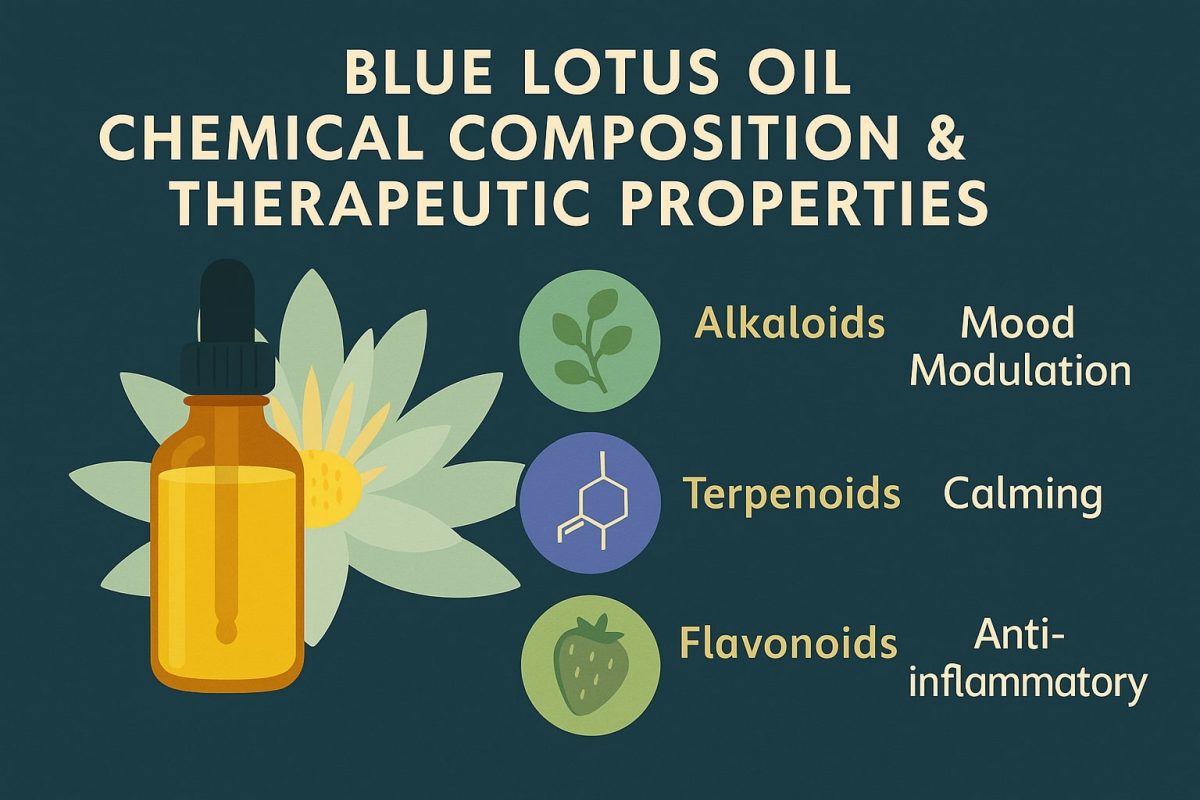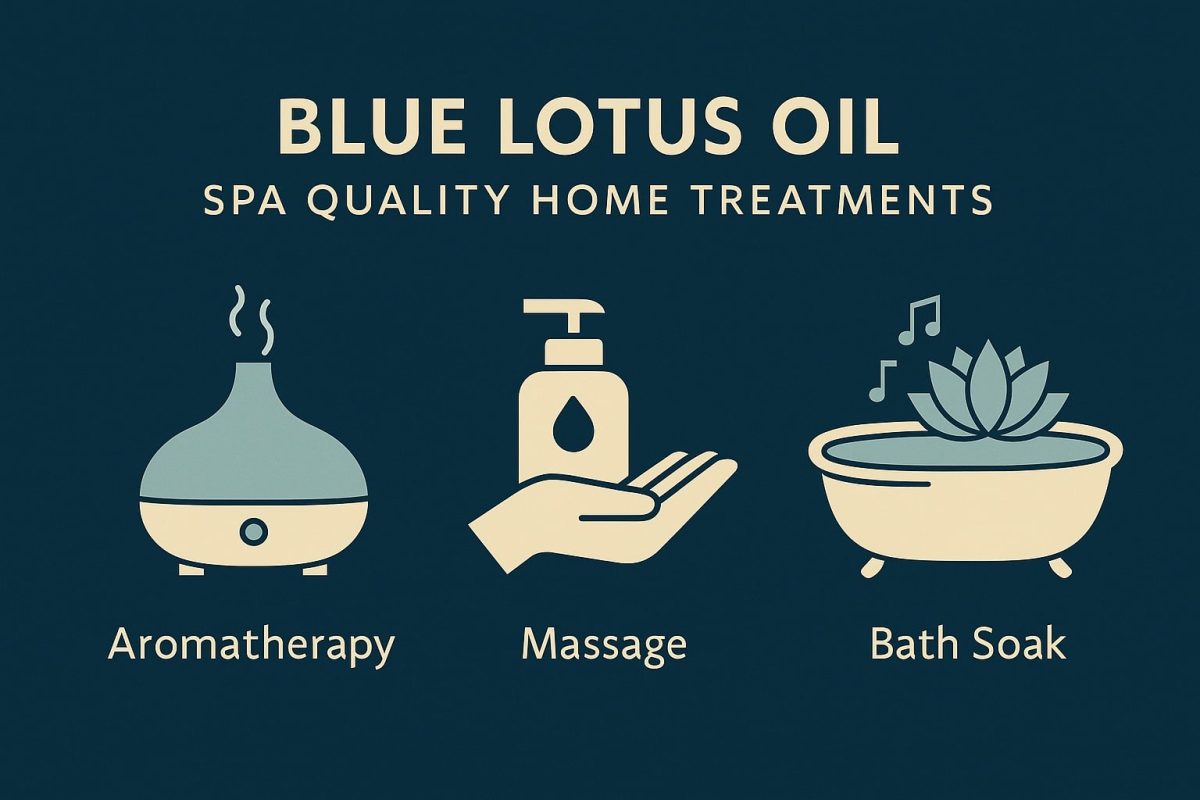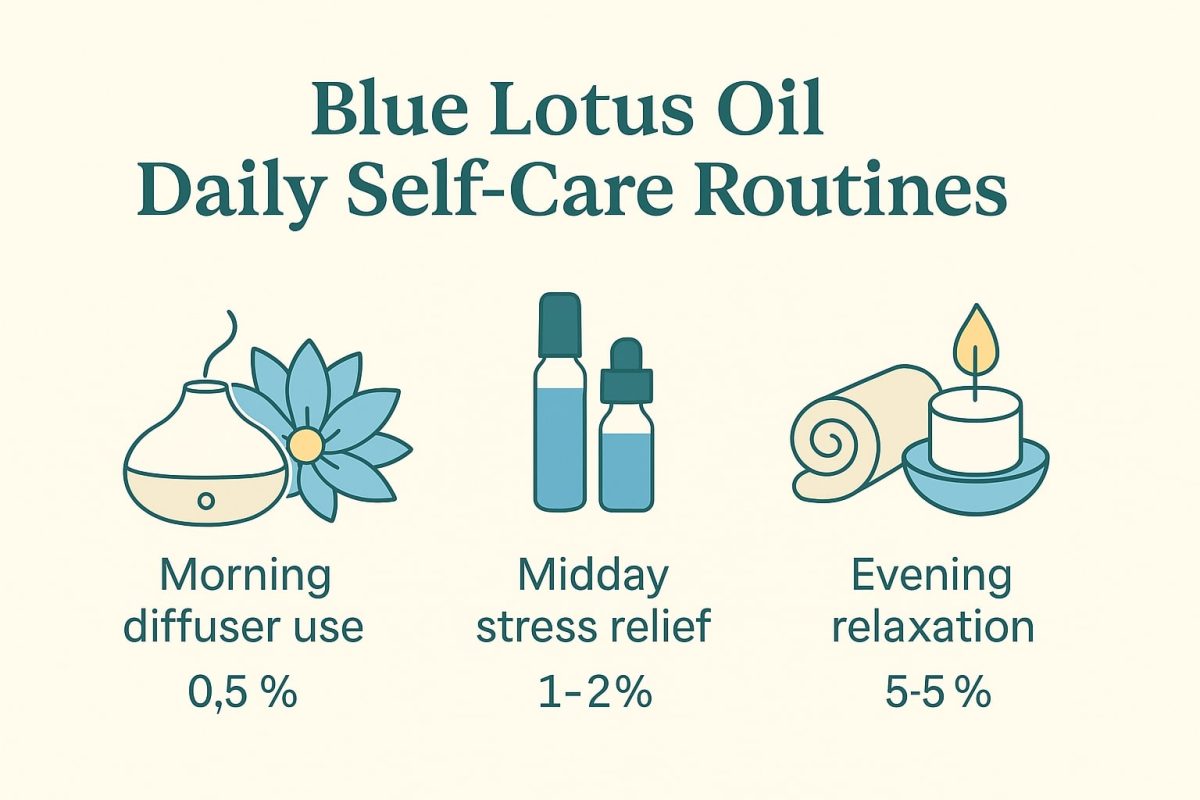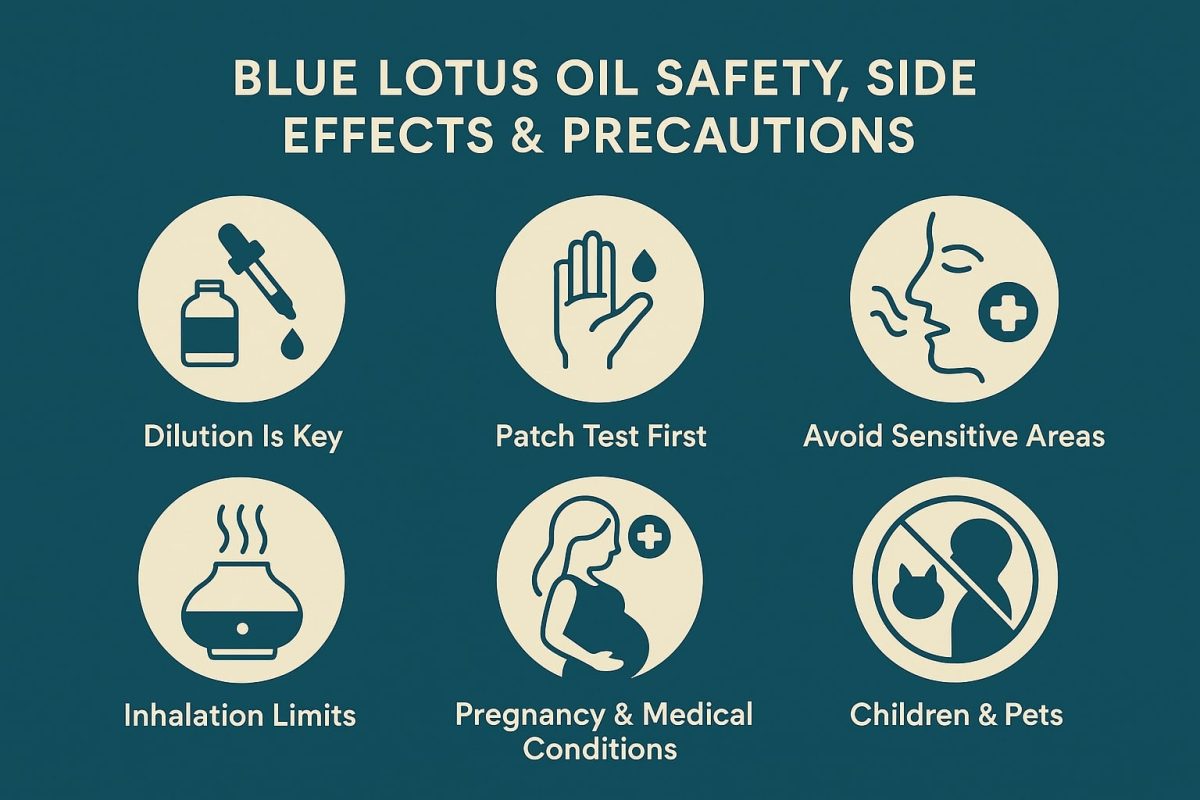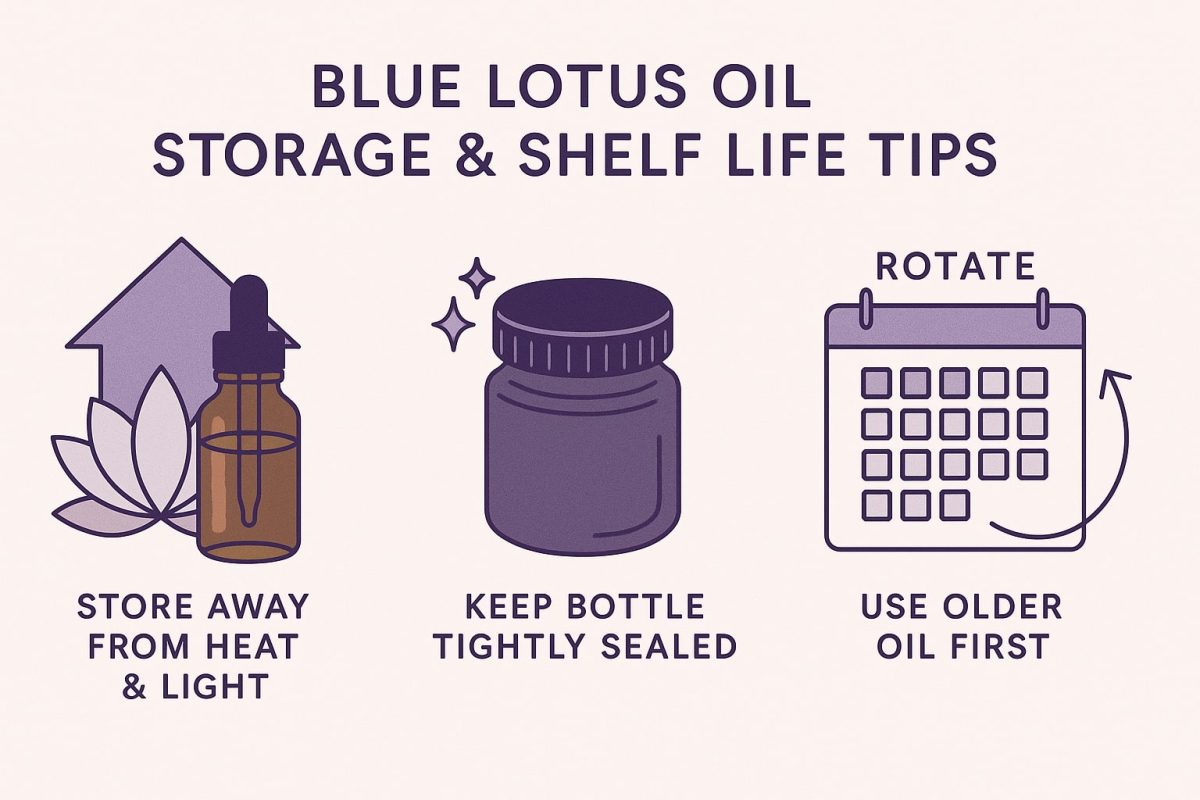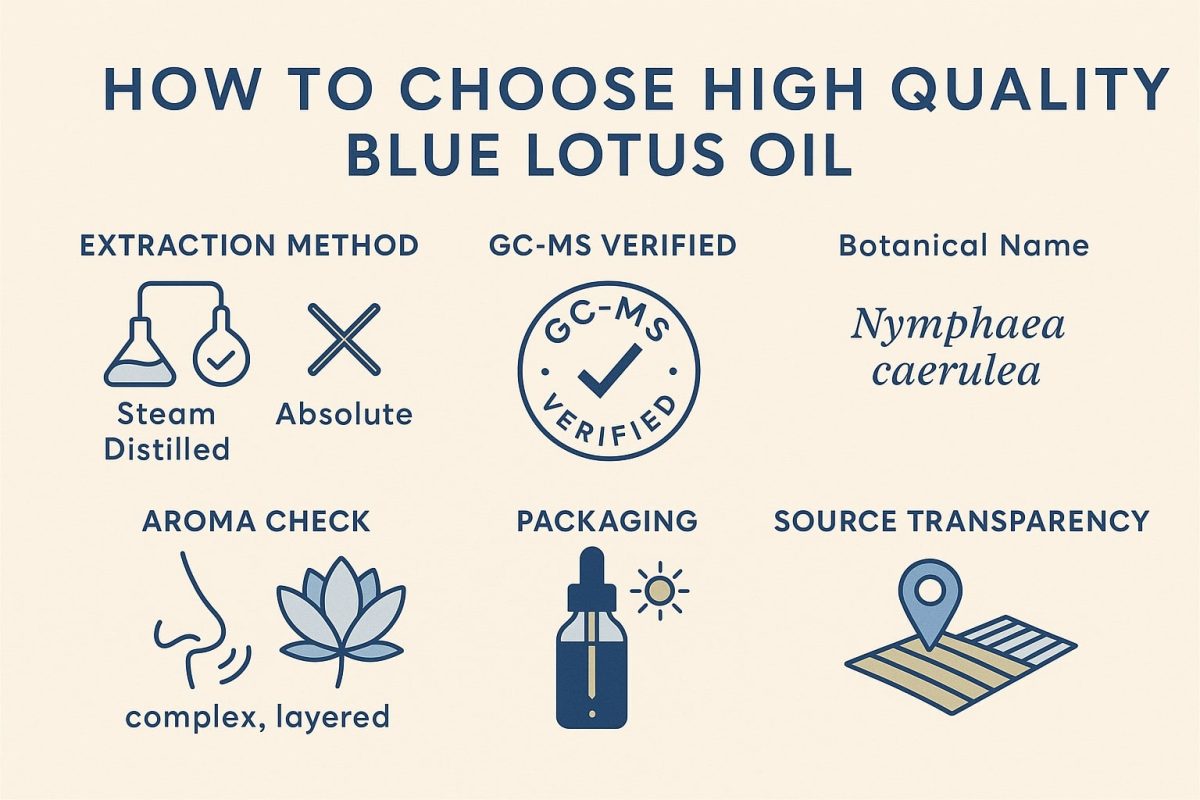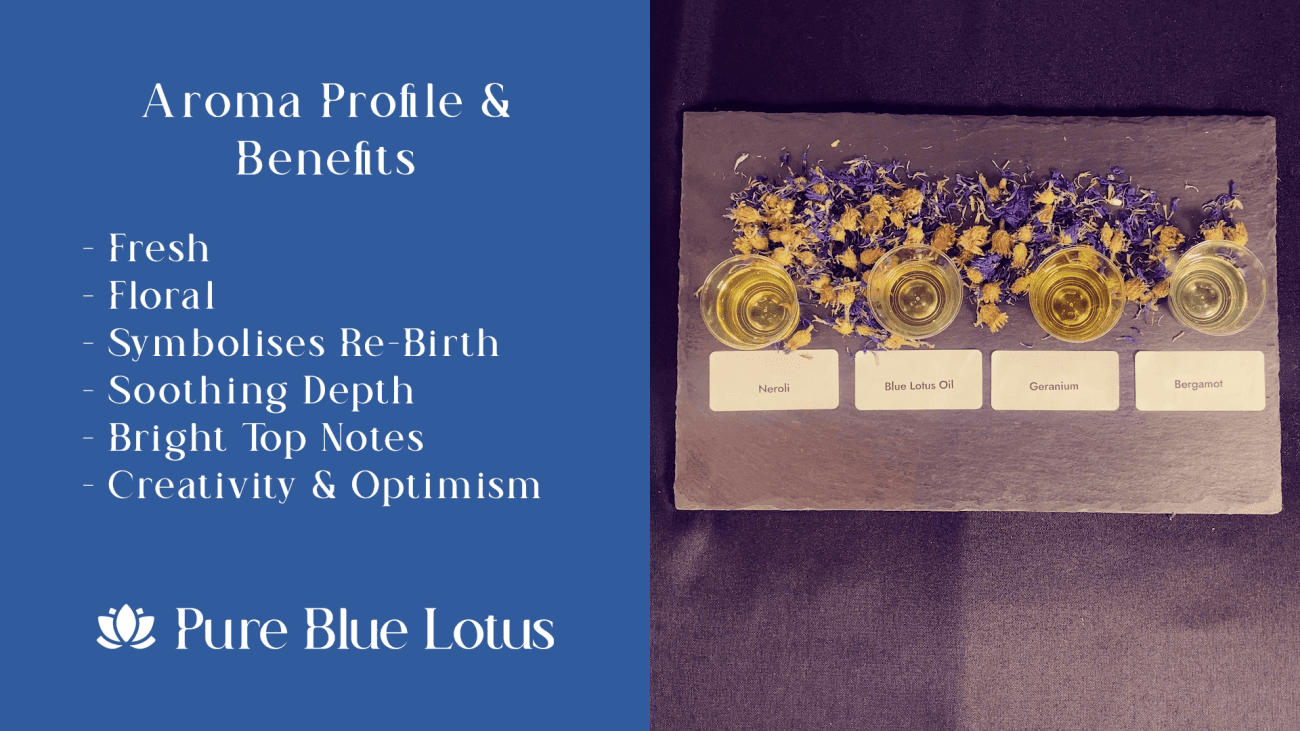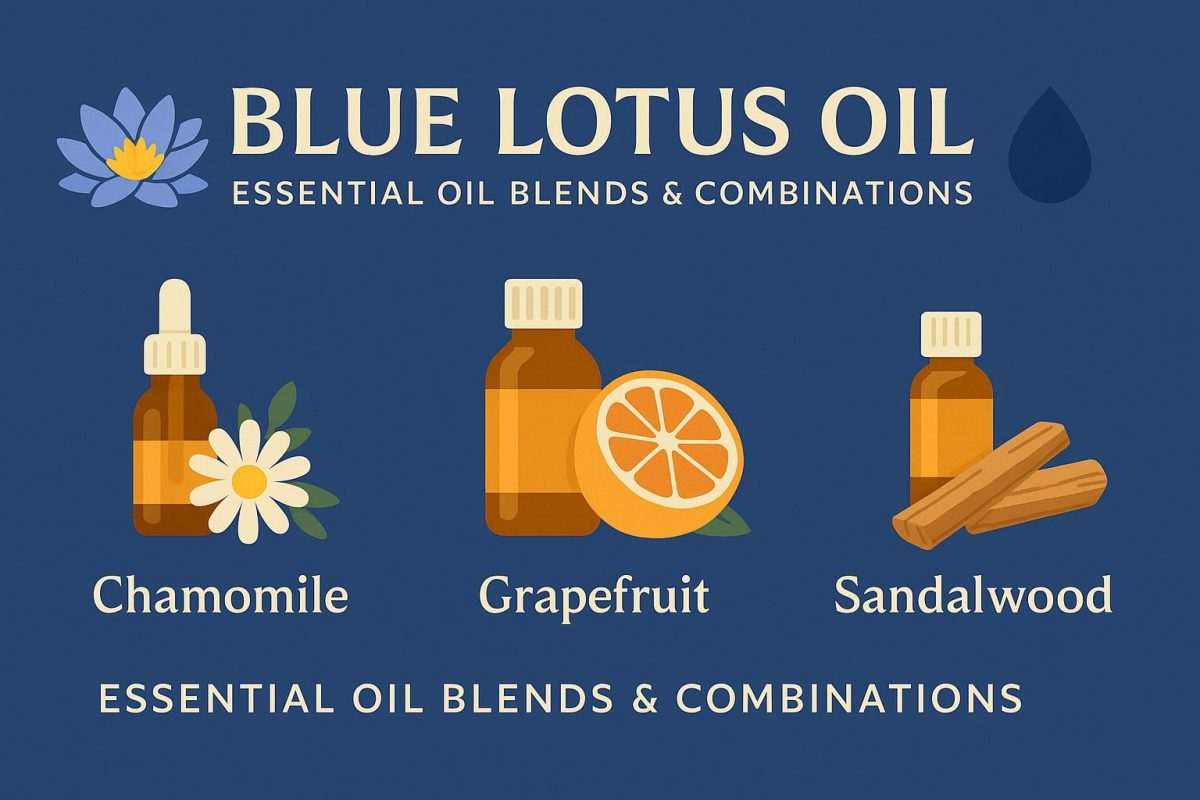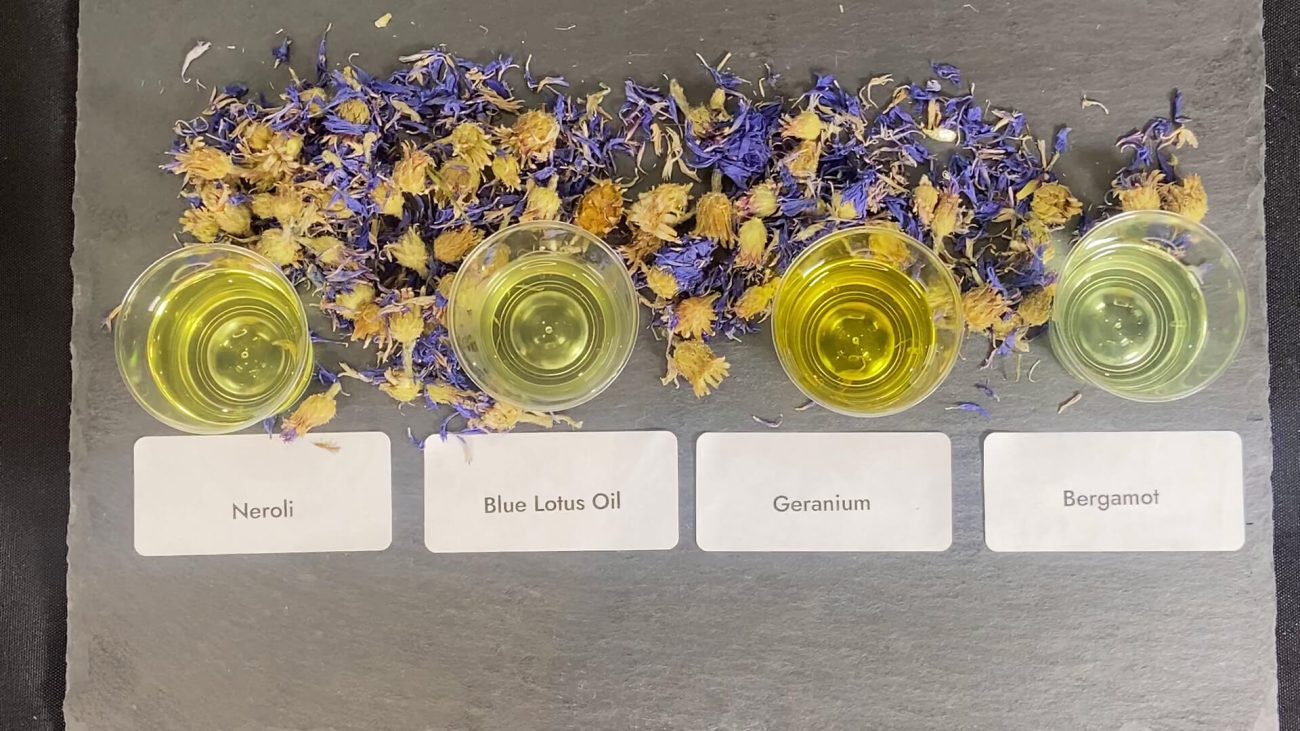Raw Blue Lotus Oil
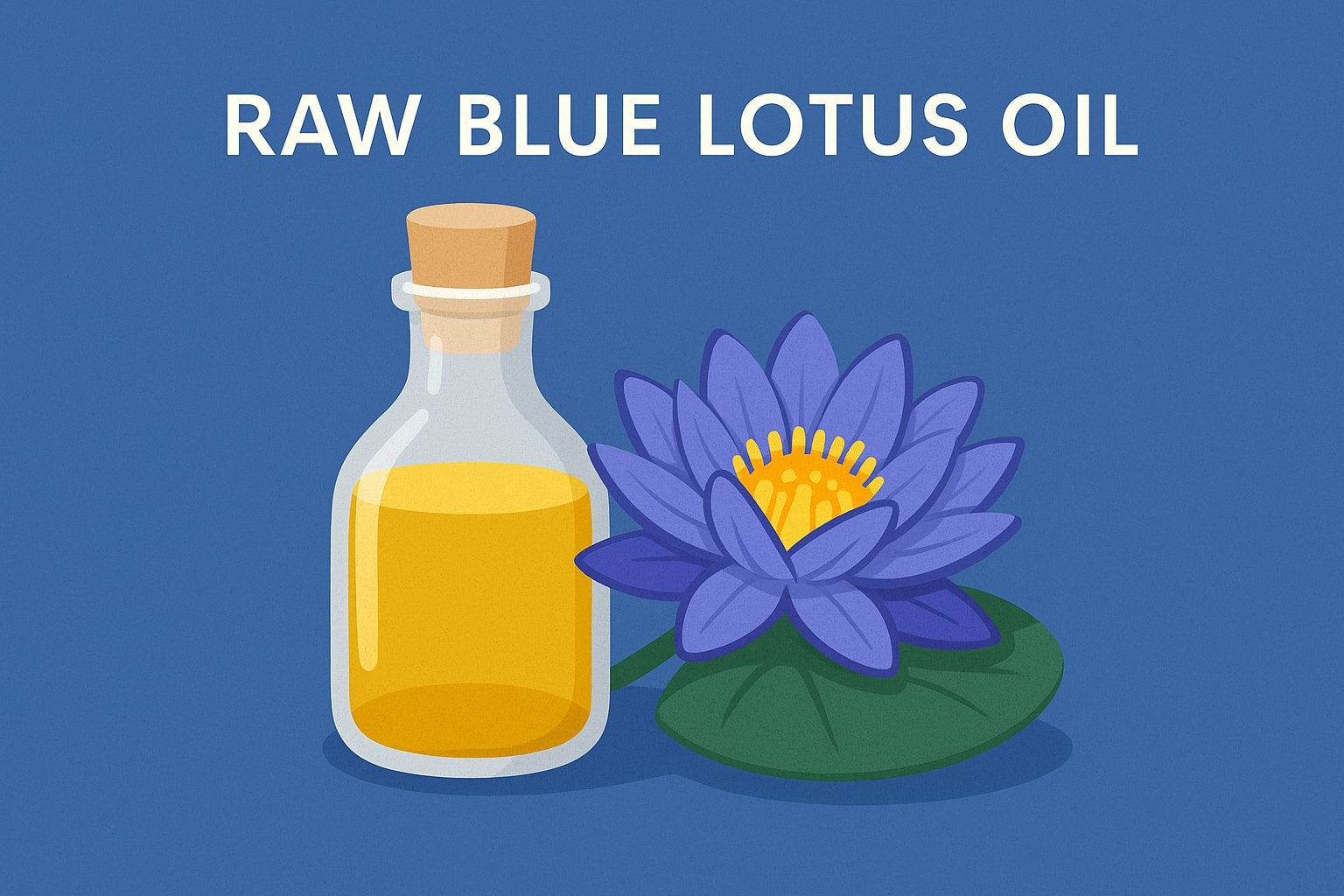
Raw blue lotus oil offers a centuries‑old botanical treasure that promotes relaxation, supports skin health, enhances mood, and can deepen meditation. Extracted gently from Nymphaea caerulea petals via cold pressing, this unrefined oil preserves the flower’s natural aromatic compounds and beneficial phytochemicals, delivering a potent, versatile elixir for wellness rituals, skincare formulations, and spiritual practices.
For those seeking the finest, the highest quality Blue Lotus Oil, experience our hand-crafted, pure Luxury Egyptian Blue Lotus Oil (Nymphaea Caerulea) for a truly luxurious addition to your wellness routine. Find out more →
Quick Links to Useful Sections
- Botanical Profile of Blue Lotus
- Historical and Cultural Significance
- Cold Pressing vs. Other Extraction Methods
- Chemical Composition and Therapeutic Profile
- Health and Wellness Benefits
- Relaxation and Stress Relief
- Mood Enhancement and Creativity
- Skin Nourishment and Anti‑Aging
- Pain and Inflammation Relief
- Spiritual and Meditative Support
- Natural Aphrodisiac
- Practical Applications and Rituals
- Facial Serum and Moisturizer Boost
- Full‑Body Massage Oil
- Bath Ritual
- Inhalation and Diffusion
- Scalp and Hair Treatment
- Quality, Sourcing, and Sustainability
- Product Range and Pricing
- Comparison with Other Lotus Oils
- Safety and Precautions
- Frequently Asked Questions
Botanical Profile of Blue Lotus
The blue lotus flower, scientifically known as Nymphaea caerulea, is a water lily native to the Nile Basin and parts of East Africa. It features striking cerulean petals and a fragrant golden center. In ideal conditions the plant blooms early in the morning, closing its petals by midafternoon. Its preference for still or slow‑moving freshwater lakes and ponds made it revered by ancient civilizations for both its beauty and its psychoactive, aromatic properties.
Modern botanists classify blue lotus in the Nymphaeaceae family. Its petal extract contains unique alkaloids, apomorphine, nuciferine, and flavonoids such as quercetin and kaempferol, which contribute to its mild sedative and mood‑uplifting effects. Volatile terpenes, including linalool and limonene, impart the flower’s distinctive floral‑fruity scent and support anxiolytic actions.
Commission your made-to-order bottle of pure, undiluted Egyptian Blue Lotus Oil (Nymphaea Caerulea)
Commission your made-to-order bottle of pure, undiluted Egyptian Blue Lotus Oil (Nymphaea Caerulea)
Historical and Cultural Significance
Archaeological finds at Egyptian temples and tombs dating as far back as 2500 BCE depict blue lotus garlands and vessels containing lotus‑infused oils. Priests and pharaohs used the flower in rituals to symbolize creation, rebirth, and the daily cycle of the sun. References in hieroglyphs and papyri describe lotus baths, sacred libations, and incense blends incorporating the flower to facilitate trance states and spiritual communion.
Beyond Egypt, blue lotus appears in ancient Ayurvedic and Tibetan texts, where it was prized for balancing the doshas and supporting meditation. Traders carried dried petals along the Silk Road, introducing the plant’s calming aroma to Greece and Rome, where physicians prescribed lotus‑infused remedies for insomnia and anxiety.
Cold Pressing vs. Other Extraction Methods
Raw blue lotus oil is ideally obtained through cold pressing, a mechanical process in which freshly harvested petals are crushed and pressed under low temperatures to release their natural oils and aromatic constituents. This method avoids solvents and heat that can degrade delicate terpenes and alkaloids, preserving the full spectrum of phytoactives.
By contrast, steam distillation may yield a lighter essential oil but often loses heavier waxes and resinous compounds. Solvent extraction can capture a broader array of constituents but may introduce chemical residues and require additional purification. Cold pressing thus produces a viscous, golden‑amber oil rich in both volatile and non‑volatile nutrients.
Chemical Composition and Therapeutic Profile
Raw blue lotus oil contains:
- Apomorphine and Nuciferine: Alkaloids associated with dopamine modulation, mild euphoria, and mood support.
- Flavonoids: Quercetin, kaempferol, and isorhamnetin that act as antioxidants and cellular protectants.
- Terpenes: Linalool, limonene, and geraniol contributing anxiolytic, anti‑inflammatory, and antimicrobial effects.
- Fatty acids: Linoleic, oleic, and palmitic acids that nourish skin barrier function and aid in nutrient delivery.
- Wax esters and phytosterols: Support skin hydration and provide a protective emollient layer.
The synergy of these compounds delivers multi‑modal benefits when applied topically or inhaled: mental calm, antioxidant defense, improved skin tone, and gentle analgesia for muscle tension.
Health and Wellness Benefits
Relaxation and Stress Relief
Inhalation of raw blue lotus oil’s floral‑herbal aroma engages olfactory pathways linked to the limbic system, reducing cortisol levels and promoting calm. A few drops in a diffuser before bedtime, or inhaled directly from a personal inhaler, can ease racing thoughts and support restful sleep.
Mood Enhancement and Creativity
Users often report subtle mood elevation and increased mental clarity. The oil’s mild euphoriant alkaloids can boost motivation and creative flow without sedation, making it a popular pre‑work ritual for artists and writers.
Skin Nourishment and Anti‑Aging
Topical application delivers potent antioxidants that neutralize free radicals and support collagen synthesis. Regular use can reduce fine lines, improve elasticity, and soothe irritation in sensitive or mature skin.
Pain and Inflammation Relief
Blue lotus oil exhibits gentle analgesic and anti‑inflammatory properties, making it useful for massaging sore muscles, alleviating joint discomfort, and easing headaches when applied to temples with a warm compress.
Spiritual and Meditative Support
Traditional practitioners incorporate raw blue lotus oil into meditation by anointing pulse points or adding it to ritual incense. The oil’s psychoactive compounds can deepen focus, quiet mental chatter, and facilitate insight during contemplative practices.
Natural Aphrodisiac
Historical records attribute aphrodisiac qualities to blue lotus. Its combined relaxing and mood‑uplifting effects can enhance intimacy by reducing inhibition and promoting sensual connection.
Practical Applications and Rituals
Facial Serum and Moisturizer Boost
Combine two to three drops of raw blue lotus oil with your favorite unscented facial serum or moisturizer. Massage gently into cleansed skin using upward strokes. Ideal for night use to support overnight regeneration.
Full‑Body Massage Oil
Create a soothing massage blend by mixing 15 ml of raw blue lotus oil with 30 ml sweet almond or jojoba oil. Warm in palms then apply to shoulders, back, and limbs. Use slow, deliberate strokes to release muscle tension and promote lymphatic drainage.
Bath Ritual
Add 5–10 drops of raw blue lotus oil to a warm bath along with a half‑cup of Epsom salts. Soak for 20–30 minutes while breathing deeply. Enhance the ritual by dim lighting, soft music, and a mindfulness meditation.
Inhalation and Diffusion
Use 3–5 drops in an ultrasonic diffuser, aroma lamp, or personal inhaler. Diffuse in the bedroom or living area before meditation, yoga, or creative sessions to cultivate calm and focus.
Scalp and Hair Treatment
Warm 5 ml of the oil between hands and massage into the scalp. Wrap hair in a warm towel and leave on 30–60 minutes before shampooing. This nourishes follicles, reduces dryness, and adds shine.
Quality, Sourcing, and Sustainability
Pure raw blue lotus oil should meet these criteria:
- Cold‑pressed from freshly harvested petals within 24 hours of bloom.
- Certified organic or wild‑crafted, free from pesticides and heavy metals.
- Third‑party GC‑MS analysis confirming absence of residual solvents and contaminants.
- Fair trade partnerships with local harvesters to support community livelihoods and preserve ecosystems.
- Opaque, UV‑protective packaging to maintain oil integrity.
Brands that invest in sustainable cultivation and ethical wild‑harvesting ensure long‑term availability of blue lotus and safeguard aquatic habitats.
Product Range and Pricing
Raw blue lotus oil is available in various sizes and formats. Below is a typical price overview (prices may vary by region and retailer):
- 10 ml dropper bottle: €24.00 / $28.00
- 30 ml amber glass bottle: €59.00 / $69.00
- 50 ml eco‑refill pouch: €99.00 / $115.00
- Personal inhaler (pre‑filled): €19.00 / $22.00
Many suppliers offer bundled sets that include massage/serum combos and bath ritual kits, providing savings of 10–25 % over individual purchases.
Comparison with Other Lotus Oils
Two common variants include lotus essential oil (steam‑distilled) and absolute oil (solvent‑extracted). Raw blue lotus oil stands out for:
- Full spectrum of water‑ and oil‑soluble compounds retained via cold pressing.
- No residual solvents or high‑heat degradation.
- Rich emollient properties from natural waxes and fatty acids.
- Stronger tactile and aromatic profile compared to lighter distilled oils.
Safety and Precautions
Though generally well tolerated, follow these guidelines:
- Perform a patch test: apply a drop behind the ear or inner forearm and wait 24 hours for reactions.
- Avoid contact with eyes, inner ears, and mucous membranes.
- Consult a healthcare provider if pregnant, nursing, or taking medications that affect neurotransmitters.
- Store in a cool, dark place away from sunlight and heat sources.
- Use within 12 months of opening to ensure potency.
Frequently Asked Questions
How much raw blue lotus oil should I use per application?
Start with 1–3 drops for facial or inhalation use, and 5–10 drops for full‑body or bath rituals. Adjust according to personal sensitivity and desired intensity.
Can I combine raw blue lotus oil with other carrier oils or essential oils?
Yes. It blends well with jojoba, almond, coconut, and grapeseed oils for topical use, and pairs harmoniously with lavender, frankincense, or sandalwood for aromatherapy. Maintain total essential oil concentration below 5 % in blends.
Does raw blue lotus oil have psychoactive effects?
It contains mild alkaloids that can produce gentle euphoria and relaxation, but it is not comparable to potent psychoactive substances. Effects are subtle and well suited to wellness rituals.
Is raw blue lotus oil vegan and cruelty‑free?
Pure cold‑pressed blue lotus oil is vegan, plant‑derived, and cruelty‑free. Verify that no animal‑based additives or testing are involved in the brand’s supply chain.
Where can I purchase high‑quality raw blue lotus oil?
Reputable suppliers include specialized aromatherapy boutiques, organic wellness stores, and certified online retailers. Always look for GC‑MS test results and organic or wild‑harvest certifications.
For those seeking the finest, the highest quality Blue Lotus Oil, experience our hand-crafted, pure Luxury Egyptian Blue Lotus Oil (Nymphaea Caerulea) for a truly luxurious addition to your wellness routine. Find out more →

